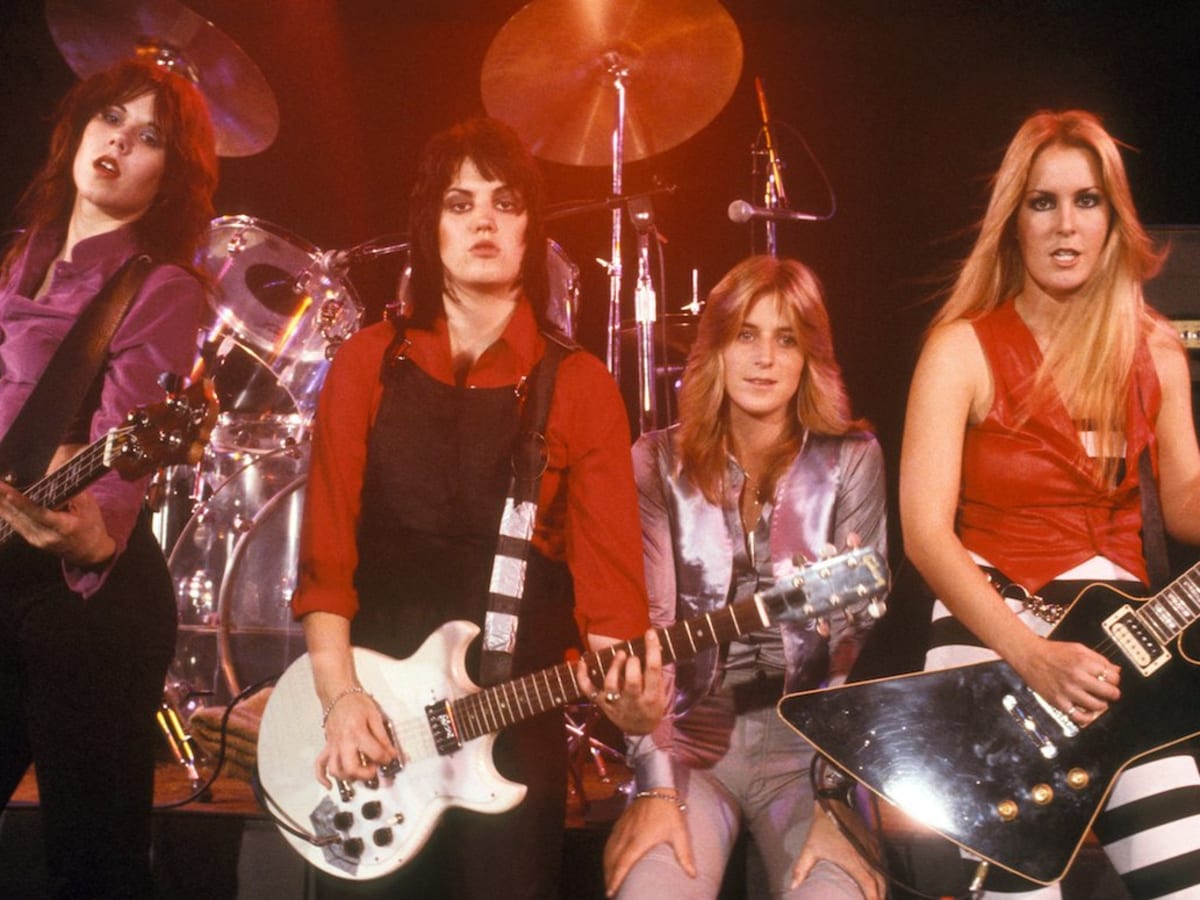

Rock
What Frequency Is Rock Music
Modified: February 15, 2024
Discover the frequency of rock music and explore its unique sound. Rock your world with this comprehensive guide to the heart and soul of the genre.
(Many of the links in this article redirect to a specific reviewed product. Your purchase of these products through affiliate links helps to generate commission for AudioLover.com, at no extra cost. Learn more)
Table of Contents
- Introduction
- The Basics of Sound Frequency
- The History of Rock Music
- The Characteristics of Rock Music
- The Frequency Spectrum of Rock Music
- The Influence of Frequency in Rock Music Production
- Popular Rock Music Genres and their Frequency Profiles
- The Impact of Frequency on the Listening Experience
- How to Experiment with Frequency in Rock Music
- Conclusion
Introduction
Rock music, with its electrifying energy and rebellious spirit, has been a defining genre of modern music since its emergence in the mid-20th century. From the powerful riffs of Led Zeppelin to the raw intensity of Nirvana, rock music has captivated audiences and shaped cultural movements around the world.
But have you ever wondered what makes rock music sound so distinct and captivating? One key aspect lies in the frequency of the music. Understanding the role of frequency in rock music production can provide insights into its unique sound and help enhance the listening experience.
In this article, we will delve into the world of sound frequency and explore how it relates to rock music. From the basics of sound frequency to the characteristics of rock music and its impact on the listening experience, this article will serve as a comprehensive guide to help you grasp the importance of frequency in the realm of rock music.
So grab your headphones, turn up the volume, and join us on this sonic journey as we uncover the secrets of frequency in rock music!
The Basics of Sound Frequency
Before we dive into the world of rock music and its frequency spectrum, let’s start by understanding the basics of sound frequency. Sound is a physical phenomenon that travels in waves, creating vibrations that are detected by our ears.
Frequency, in the context of sound, refers to the number of vibrations or cycles per second that a sound wave produces. It is measured in Hertz (Hz). Higher frequencies correspond to higher pitches, while lower frequencies correspond to lower pitches. For example, a soprano singing a high note produces a sound wave with a high frequency, while a bass guitar playing a low note produces a sound wave with a low frequency.
Humans can generally hear frequencies ranging from 20 Hz to 20,000 Hz, with the ability to perceive higher frequencies diminishing with age. The audible frequency spectrum is divided into different frequency bands, each associated with a particular range of pitches. These bands are often represented graphically on a frequency spectrum chart.
In the context of rock music, understanding the frequency spectrum is crucial for musicians, producers, and engineers. It allows them to shape the overall sound and ensure that different instruments and elements of the music are balanced and blended effectively.
Now that we’ve covered the basics of sound frequency, let’s explore the historical journey of rock music to gain a deeper appreciation for its evolution and influence.
The History of Rock Music
Rock music has a rich and vibrant history that traces back to the mid-20th century. Its roots can be found in a fusion of various musical genres, including blues, country, and jazz. The genre gained traction and popularity during the 1950s and 1960s, eventually becoming a cultural phenomenon that would leave an indelible mark on music history.
The birth of rock music can be attributed to a few key figures who pushed the boundaries of popular music at the time. One of the earliest pioneers of rock and roll was Chuck Berry, whose energetic guitar riffs and catchy melodies set the stage for the genre’s explosive growth. Other notable artists like Little Richard, Elvis Presley, and Jerry Lee Lewis also played instrumental roles in shaping the early sound and style of rock music.
In the 1960s, rock music experienced a revolution with the arrival of British bands such as The Beatles, The Rolling Stones, and The Who. These bands infused rock music with their own unique flair, blending elements of rhythm and blues, folk, and psychedelia to create a new sound that captivated audiences worldwide.
The 1970s introduced a new wave of rock music, with genres like glam rock, punk rock, and progressive rock gaining popularity. Bands like Led Zeppelin, Pink Floyd, and Queen pushed the boundaries of the genre, incorporating complex musical structures, innovative production techniques, and thought-provoking lyrics into their music.
In the 1980s and 1990s, rock music continued to evolve with the emergence of subgenres such as alternative rock, grunge, and heavy metal. Iconic bands like Nirvana, Metallica, and Pearl Jam pushed the genre into new territories, blending raw aggression with introspective lyrics and alternative sensibilities.
Today, rock music remains a vibrant and diverse genre, with countless subgenres and a global fanbase. From classic rock to modern indie rock, the genre continues to captivate audiences and inspire new generations of musicians.
With a firm understanding of rock music’s historical journey, let’s now explore the unique characteristics that define this genre’s sound.
The Characteristics of Rock Music
Rock music is known for its distinct characteristics that separate it from other genres. These defining traits contribute to the genre’s energy, attitude, and rebellious spirit. Here are some of the key characteristics of rock music:
- Strong Rhythms: Rock music is driven by strong, often hard-hitting rhythms. The drums and bass guitar provide a solid foundation, creating a powerful and driving beat that propels the music forward.
- Electric Guitars: The electric guitar is a quintessential element of rock music. From intricate solos to thick power chords, the guitar adds a raw and edgy sound to the genre. It is often the centerpiece of rock songs, showcasing the guitarist’s virtuosity.
- Vocal Intensity: Rock music is characterized by passionate and dynamic vocals. Whether it’s the soaring melodies of a rock ballad or the raw grit of a punk rock anthem, the vocals take center stage and convey the emotions and attitude of the music.
- Lyrics with Attitude: Rock music often features lyrics that tackle themes of rebellion, angst, love, and social commentary. The lyrics can be introspective, provocative, or simply a call to let loose and rock out.
- Energetic Performances: Rock music is known for its electrifying live performances. Musicians bring a high level of energy, often engaging in lively stage antics and captivating the audience with their stage presence.
- Diverse Subgenres: Rock music encompasses a wide array of subgenres, each with its own unique characteristics. From classic rock and punk to alternative and metal, these subgenres offer distinct sounds and styles within the broader rock genre.
The characteristics of rock music contribute to its enduring appeal, attracting listeners of all ages and backgrounds. The genre continues to evolve, with new bands pushing boundaries and experimenting with new sounds.
Now that we understand the characteristics that define rock music, let’s explore the frequency spectrum of this genre and its significance in shaping the rock sound.
The Frequency Spectrum of Rock Music
The frequency spectrum of rock music encompasses a wide range of frequencies, each playing a vital role in shaping the overall sound and impact of the genre. From the thumping bass to the piercing guitars, different instruments and elements occupy different areas of the frequency spectrum. Understanding this spectrum helps musicians and producers achieve the desired mix and balance in their rock music compositions.
At the lower end of the frequency spectrum, we have the bass guitar, drums, and kick drum. These instruments provide the foundation and groove of the music, with the bass guitar producing deep, rumbling frequencies in the low end. The kick drum adds a powerful impact, often occupying the lower midrange frequencies, while the snare drum adds a sharp transient in the higher midrange frequencies.
Around the midrange frequencies, we find the human voice, electric guitars, and keyboards. The human voice cuts through the mix, delivering expressive and emotional lyrics. Electric guitars, known for their characteristic crunch and sustain, occupy a wide range of frequencies, from the midrange to the upper midrange. Keyboards and synthesizers can add layers of texture and harmonies, filling out the sound in the midrange frequencies.
In the higher frequencies, we have cymbals, tambourines, and other percussive elements. These instruments add sparkle and brightness to the music, contributing to its energetic and dynamic feel. The high-frequency content can also be found in the upper harmonics of the electric guitars, adding definition and clarity to their tone.
It’s important to note that the frequency spectrum in rock music can vary depending on the subgenre and the specific artistic choices made by the musicians and producers. For example, heavier subgenres like metal may emphasize lower frequencies and aggressive guitar tones, while indie rock may focus more on midrange frequencies and intricate guitar melodies.
To achieve the desired mix and balance, musicians and producers often employ various audio processing techniques. EQ (equalization) is commonly used to shape the frequency spectrum, boosting or attenuating specific frequencies to achieve clarity and separation between instruments. Compression helps control the dynamics, ensuring that different elements of the music are heard clearly without overwhelming the mix.
Understanding the frequency spectrum and how different instruments occupy different frequency ranges allows musicians and producers to create a well-balanced and impactful rock sound. With this knowledge, let’s explore the influence of frequency in the production process when it comes to rock music.
The Influence of Frequency in Rock Music Production
In the realm of rock music production, frequency plays a crucial role in shaping the overall sound and impact of a song. The careful manipulation of frequencies during the production process can enhance the clarity, power, and emotion of the music. Here are some ways in which frequency influences rock music production:
Tonal Balance: Achieving a balanced frequency spectrum is essential for a well-rounded mix. Each instrument and element should have its own space in the frequency spectrum, allowing them to be heard clearly without clashing or overpowering one another. This involves carefully adjusting the EQ for each element, emphasizing certain frequencies and attenuating others to create a cohesive and balanced sound.
Instrument Separation: By shaping the frequency content of different instruments, producers can create separation and distinction between them. For example, boosting the low frequencies of the bass guitar while attenuating the same frequencies in the electric guitar can help prevent them from muddying up the mix. This allows each instrument to stand out and contribute to the overall sonic landscape.
Emotional Impact: Certain frequencies have psychological and emotional effects on listeners. For instance, low frequencies can create a sense of power and intensity, while high frequencies can add brightness and excitement. Producers may strategically use frequency manipulation to enhance the emotional impact of a song, emphasizing frequencies that evoke specific emotions or moods.
Effect and Texture: Manipulating frequencies can also shape the overall character and texture of the music. By utilizing techniques such as distortion, saturation, or filtering, producers can add grit, warmth, or unique sonic qualities to the instruments or vocals. These effects can help create the desired atmosphere and add depth to the overall production.
Accentuating Musical Elements: Frequency manipulation can be used to highlight specific musical elements or create unique sonic signatures. For example, boosting the presence frequencies in a guitar solo can make it stand out and cut through the mix. Similarly, accentuating the high frequencies in a snare drum can give it a crisp and snappy sound.
Dynamic Range: The balance of frequencies also affects the dynamic range of the music. By controlling the levels of different frequency bands, producers can shape the intensity and impact of different sections or moments within a song. This can bring out the nuances and emotions of the performance, enhancing the overall listening experience.
Ultimately, understanding the influence of frequency in rock music production allows producers to sculpt the sound of a song, ensuring that it resonates with listeners and captures the essence of the genre. Now, let’s explore how different rock music genres have distinct frequency profiles that contribute to their unique sound.
Popular Rock Music Genres and their Frequency Profiles
Rock music encompasses a diverse range of subgenres, each with its own distinct sound and style. One of the factors that contributes to the unique characteristics of these subgenres is their frequency profiles. Let’s take a look at some popular rock music genres and their typical frequency profiles:
Classic Rock: Classic rock is characterized by its melodic song structures, catchy hooks, and powerful guitar-driven sound. In terms of frequency, classic rock tends to have a balanced spectrum, with emphasis on the midrange frequencies. The electric guitars provide warm, midrange-focused tones, while the drums and bass guitar provide a solid foundation in the lower frequencies.
Punk Rock: Punk rock is known for its raw, fast-paced energy and rebellious attitude. In terms of frequency, punk rock tends to have aggressive midrange frequencies, with emphasis on the guitars and vocals. The guitars often feature distortion and high-gain tones, cutting through the mix with their presence. The drums provide a driving beat, showcasing snappy snares and punchy kicks.
Alternative Rock: Alternative rock is characterized by its eclectic and experimental nature, blending elements from various genres. In terms of frequency, alternative rock can vary widely depending on the specific subgenre or band. However, it often emphasizes midrange frequencies, with a focus on both clean and distorted guitar tones. The vocals may range from melodic and emotive to gritty and raspy.
Heavy Metal: Heavy metal is known for its aggressive, guitar-driven sound, intense drumming, and powerful vocals. In terms of frequency, heavy metal tends to have a heavy emphasis on low and midrange frequencies, with thunderous basslines and guitar riffs that occupy the lower end of the spectrum. The vocals often have a wide range, from soaring high notes to guttural growls.
Progressive Rock: Progressive rock is characterized by its complex song structures, virtuosic musicianship, and intricate arrangements. In terms of frequency, progressive rock often incorporates a wide range of frequencies. The bass guitar lays a prominent foundation in the lower frequencies, while the guitars and keyboards explore the mid to upper midrange frequencies. The vocals can range from soft and melodic to powerful and operatic.
These examples illustrate how different rock music genres have their own unique frequency profiles, contributing to their distinct sound and style. While these frequency profiles serve as general guidelines, it’s important to note that many bands and artists within each genre may experiment and deviate from these norms to create their own sound.
Now, with an understanding of the frequency profiles in rock music genres, let’s move on to explore the impact of frequency on the listening experience.
The Impact of Frequency on the Listening Experience
Frequency plays a significant role in shaping the listening experience of rock music. The manipulation and arrangement of frequencies can influence how we perceive and connect with the music. Here are some ways in which frequency impacts the listening experience:
Emotional Response: Different frequencies evoke different emotional responses. Low frequencies can create a sense of power and intensity, while high frequencies can add brightness and excitement. The strategic use of frequencies can enhance the emotional impact of the music, eliciting specific emotions and immersing listeners in the sonic journey.
Instrument Clarity: The balance of frequencies affects the clarity and definition of individual instruments. Proper frequency separation and equalization ensure that each instrument can be heard clearly and distinctly, enhancing the overall listening experience. When instruments are well-defined within the frequency spectrum, listeners can appreciate the complexity and nuances of the music.
Soundstage and Immersion: By carefully shaping the frequencies, producers can create a rich and immersive soundstage for the listener. The placement of elements within the frequency spectrum and the spatialization of different frequencies can contribute to a three-dimensional listening experience, making the music feel as if it is enveloping the listener.
Dynamic Impact: The utilization of frequencies can enhance the dynamic impact of the music. Proper control of frequency levels allows for the build-up and release of tension, emphasizing the power and impact of certain sections or moments within a song. This dynamic range keeps listeners engaged and heightens the emotional intensity of the music.
Musical Detail: Frequencies contribute to the perception of musical detail. By emphasizing or attenuating specific frequencies, producers can bring out intricate details and subtle nuances in the music. This attention to detail allows listeners to appreciate the craftsmanship and artistry behind the composition and performance.
Ear Fatigue: The excessive presence of certain frequencies, particularly in the high-frequency range, can lead to ear fatigue. This is why proper frequency balance and equalization are crucial. By ensuring that no single frequency dominates or becomes too fatiguing, listeners can enjoy extended listening sessions without discomfort or fatigue.
Ultimately, the impact of frequency on the listening experience goes beyond mere technical aspects. It shapes the emotional connection, spatial immersion, and overall enjoyment of the music. Musicians and producers who understand the influence of frequencies can create a well-crafted sonic experience that resonates deeply with listeners.
Now that we have explored the impact of frequency on the listening experience, let’s delve into how you can experiment with frequency in your own rock music compositions.
How to Experiment with Frequency in Rock Music
Experimenting with frequency in rock music allows musicians and producers to add unique textures, tones, and dynamics to their compositions. Here are some techniques and considerations to help you explore and experiment with frequency in your own rock music:
Equalization (EQ): Use EQ to shape the frequency content of each instrument in your mix. Boost or attenuate specific frequencies to achieve tonal balance, clarity, and separation. Experiment with different EQ settings to bring out the desired characteristics of each instrument and create a cohesive sonic blend.
Layering and Arrangement: Experiment with layering different instruments and sounds across the frequency spectrum. Instead of having every instrument occupy the same frequency range, try spreading them out to create a fuller and more dynamic mix. This can be achieved through careful arrangement and orchestration, allowing each instrument to shine in its respective frequency range.
Effects and Processing: Explore the creative use of effects and processing to manipulate frequencies. Experiment with distortion, modulation, delay, reverb, and other effects to add a unique sonic flavor to your instruments. These effects can transform the frequency content and create interesting textures and atmospheres.
Frequency Modulation and Synthesis: Consider incorporating frequency modulation (FM) and synthesis techniques to create new and unique sounds. By manipulating the frequencies of oscillators and modulators, you can generate complex and evolving timbres that add depth and character to your compositions.
Panning and Spatialization: Utilize pan controls to position instruments across the stereo field, creating a sense of space and dimensionality. By carefully placing instruments with different frequency ranges, you can enhance clarity and avoid frequency masking. This technique allows each instrument to have its own sonic space and prevents them from competing for attention in the mix.
Dynamic EQ and Multiband Compression: Experiment with dynamic EQ and multiband compression to control specific frequency ranges dynamically. This allows for precise control over the frequency content, especially during sections where certain instruments or frequencies need to be emphasized or tamed. Dynamic manipulation of frequency ranges helps maintain balance and impact throughout your song.
Collaboration and Instrument Selection: Experimenting with frequency can extend beyond technical manipulation. Collaboration with other musicians and exploring different instrumental combinations can introduce new sonic possibilities. Consider incorporating instruments that naturally occupy different frequency ranges to expand the tonal palette of your compositions.
Remember, experimentation is key when it comes to exploring frequency in rock music. Don’t be afraid to break traditional norms and try unconventional approaches. Trust your ears and listen critically to the results. By being open to new ideas and sonic possibilities, you can develop your own unique sound in the vast and ever-evolving world of rock music.
Now that you have the tools to experiment with frequency, go forth and let your creativity soar!
Conclusion
Understanding the importance of frequency in rock music unlocks a world of possibilities for musicians, producers, and music enthusiasts alike. The careful manipulation of frequencies allows for the creation of unique sounds, enhances the emotional impact of the music, and shapes the overall listening experience.
From the basics of sound frequency to the characteristics of rock music, we have explored how different elements within the frequency spectrum contribute to the distinct sound of the genre. We’ve seen how genres like classic rock, punk rock, alternative rock, heavy metal, and progressive rock each have their own frequency profiles, influencing their sonic identity.
We’ve also delved into the impact of frequency on the listening experience, considering how it evokes emotions, enhances instrument clarity, and creates a dynamic range. By experimenting with frequency through equalization, layering, panning, and effects processing, musicians and producers can shape their music in unique and innovative ways.
In the end, rock music continues to evolve and push boundaries. Its powerful rhythms, electrifying guitars, and impassioned vocals captivate audiences worldwide. By understanding and harnessing the power of frequency, musicians and producers can create compelling and impactful rock music that resonates deeply with listeners.
So, whether you’re a musician looking to shape your sound, a producer aiming to create a sonic masterpiece, or a listener seeking a captivating experience, remember the role of frequency in rock music. Embrace it, experiment with it, and harness its power to create unforgettable sonic journeys in the world of rock.











